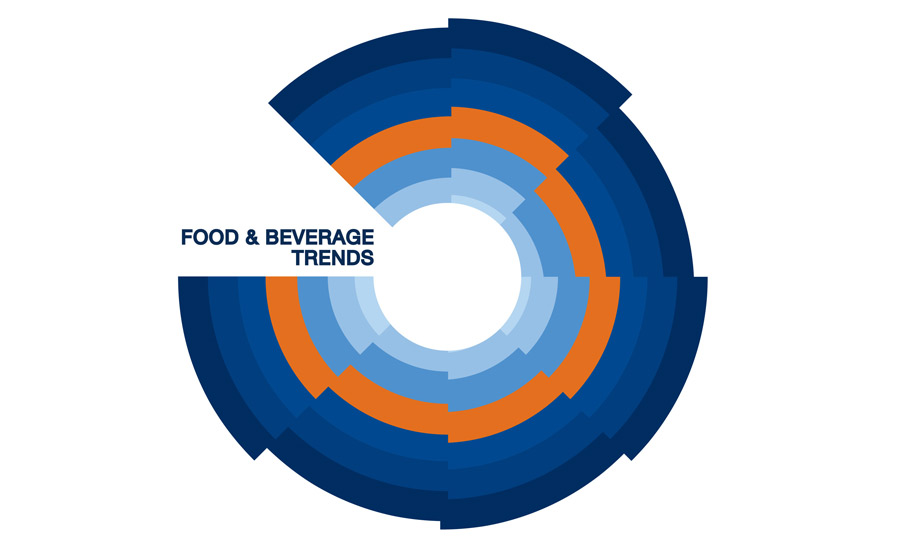Since 1985, a lot has changed in the food industry, when about 60% of food sales took place in the grocery aisle, and only about 40% of sales occurred in foodservice outlets. Today, the foodservice share of spending now accounts for more than half of all food sales, surpassing grocery retail by 1.2 percentage points. The 2nd Edition of The Why? Behind The Dine™ — published by Acosta, a full-service sales and marketing agency in the consumer packaged goods industry, and Technomic Inc., a fact-based research and consulting firm in the food industry — provides an update on diners’ path to the plate as the overall food industry has grown to an estimated $1.4 trillion in sales, driven by the emergence of new food and meal solutions.
“There have been a variety of factors affecting the food landscape over the past 30 years,” said Colin Stewart, Senior Vice President at Acosta. “Consumers’ desire for more convenient options in today’s fast-paced world is driving new technologies like mobile apps that can be used to track nutrition, find restaurant and retailer promotions and offers, or order foodservice and groceries for home delivery. Coupled with the local ingredient food movement gaining momentum, foodservice operators must continue to adapt within the evolving food consumption space by embracing digital and mobile tools, and being transparent about ingredients.”
“Our first edition of The Why? Behind The Dine showed the complex meal decisions consumers make each day, and our new research indicates that those options have become even more varied as new food and meal solutions gain traction,” said Bob Goldin, Vice Chairman of Technomic. “It’s also clear that what diners are eating, and where it’s from, matters.”
Convenience is Key
Convenience is driving how diners purchase and consume their meals. Younger diners, those with children at home and diners with a household income of $45,000 or more utilize many of the convenient meal solutions more frequently.
Over the past three months, the top five methods of food consumption were:
• Eating a meal at home (95%)
• Eating a restaurant meal (85%)
• Getting carry-out (63%)
• Using a drive-through (63%)
• Eating grocery-prepared foods (57%)
Over the past three months, diners’ method of food and beverage consumption varied by demographic:
• Sixty-four% of Millennial diners (18-34 years) have consumed grocery-prepared food, versus 51% of Boomer diners (51-69 years).
• Fifty-three% of Gen X diners (35-50 years) have ordered restaurant delivery food, versus 23% of Boomer diners (51-69 years).
• Twenty% of diners with kids have ordered an online meal/ingredient kit, versus two% of diners without kids.
What It’s Made of Matters
Diners are reading menus and labels more carefully, asking questions about foods and exhibiting a growing interest in more authentic food choices. Foodservice operators need to help them solve the healthy eating dilemma by delivering great tasting meals made with nutritious ingredients.
• Almost nine in 10 diners indicated they feel very confident or somewhat confident selecting healthy foods from a menu.
• Two-thirds of diners agree with the statement: “It's important for me to feel good about the food I'm putting into my body.”
• Nearly half of diners surveyed agree with the statement: “I actively seek out nutritious foods that are good for me.”
Digital Tools Take Priority for Diners
Location and budget are no longer the only guiding factors in deciding how, what, where and when to eat. Diners are increasingly using digital and social tools, as well as loyalty cards, to navigate their dining decisions.
• Four in 10 diners are using the internet to find the best restaurant deals.
• Six in 10 Millennials and four in 10 Gen X diners agreed that they often read restaurant menus online before going out to eat.
• 15% of U.S. diners use social networking regularly for restaurant dining.
Foodservice operators, distributors and manufacturers need to continue to look for innovative ways to deliver convenience for consumers. Additionally, menu choices will need to evolve to meet the growing interest in ingredient transparency, with these changes communicated on the menu and in marketing materials. Operators should also engage with diners through digital tools and social networks.
The 2nd Edition of The Why? Behind The Dine™ study was fielded in August 2015 in partnership with Technomic Inc., using a random sample of 1,500 U.S. diners. To access the full report, visit www.acosta.com/thewhybehindthedine.
